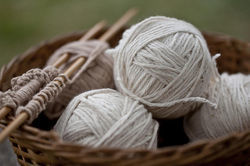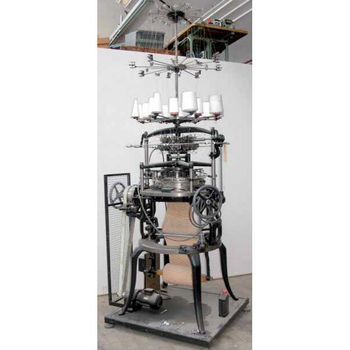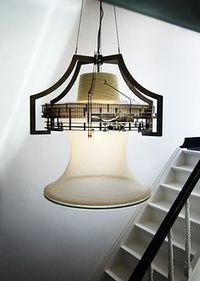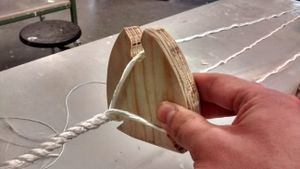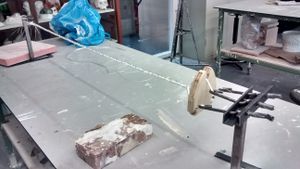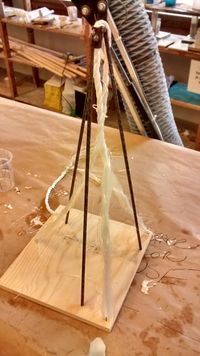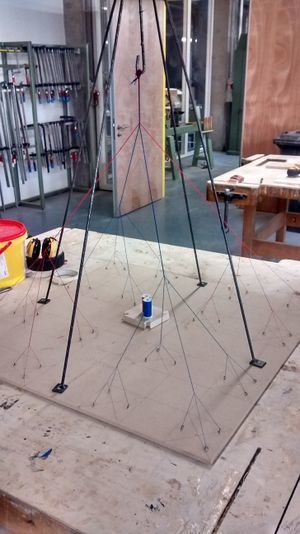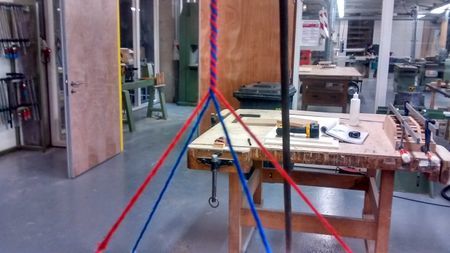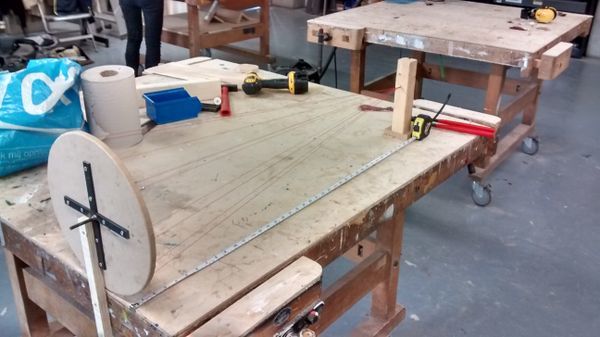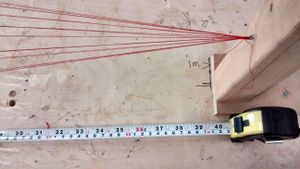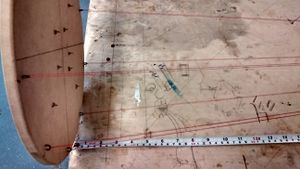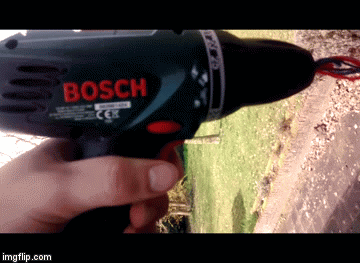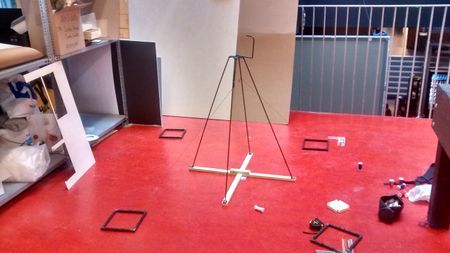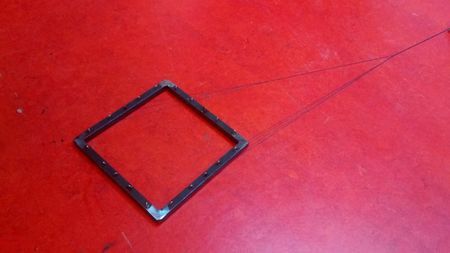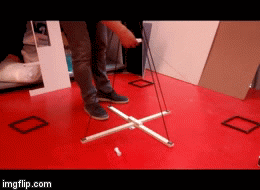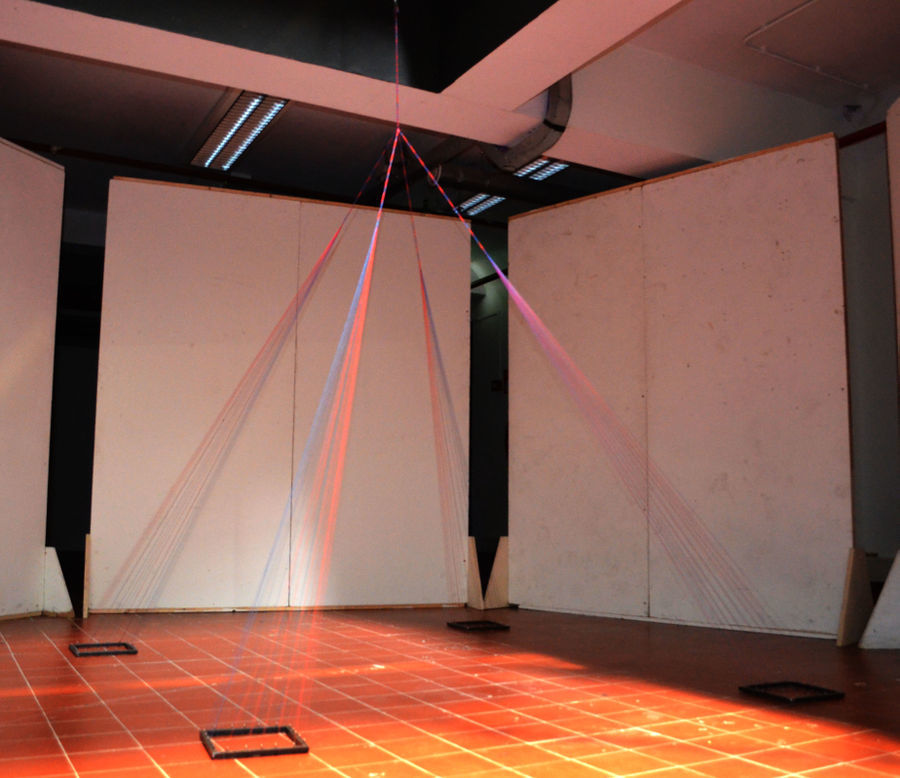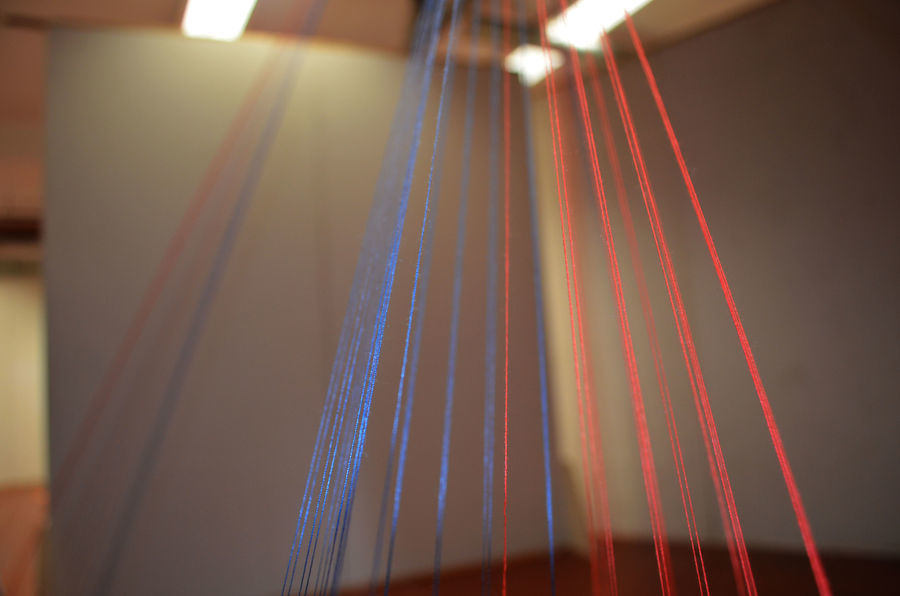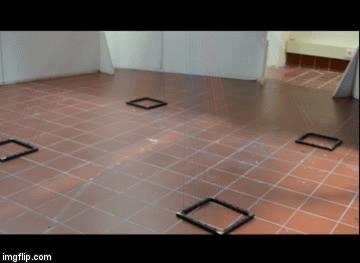User:Hugo
Hallo my name is Hugo van der Loo second year product designer at Willem de Kooning academy.
I have choosen the practise digital craft because I'm interrested in the connection between theorie and praktise. The history of craft industry ,and the meaning of making is a central theme in this quater. I want to make a product that translate my point of view toward this topic.
Contents
Three pictures of the knitting technique
Above three pictures of the knitting tehnique. The first one is knitting by hand, the second is knitting with a 19th century machine, the third one is a knitting machine that is part of a lamp. Everytime you turn the light on the lamp will knit his own lampshade for a few minutes.
My own rope machine
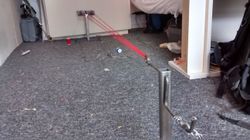
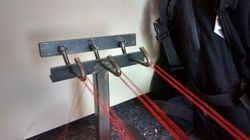
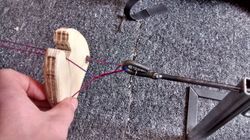
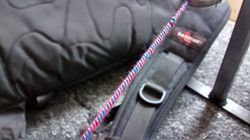 I was inspired by a book about knots. I looked at a piece of rope a thought to myself how something like that is made? It’s such a simple product, but it consists of a lot tiny yarns. On internet I learned about rope making and found out that the basics of the machine aren’t that complicated. I went in the metal workstation to make my own small rope machine.
After I made my own rope with a lot of different materials. I realized that I liked the process of making more interesting than the actual product itself. The threading of the yarns. The rotation of that forms a rope. I was fascinated by this process and wanted to capture it in an object.
I was inspired by a book about knots. I looked at a piece of rope a thought to myself how something like that is made? It’s such a simple product, but it consists of a lot tiny yarns. On internet I learned about rope making and found out that the basics of the machine aren’t that complicated. I went in the metal workstation to make my own small rope machine.
After I made my own rope with a lot of different materials. I realized that I liked the process of making more interesting than the actual product itself. The threading of the yarns. The rotation of that forms a rope. I was fascinated by this process and wanted to capture it in an object.
Glass fiber rope
I wanted to capture the making of the rope. One of the materials that I used for my rope was glass fiber. This material is often used in combination with epoxy resin to make a strong and lightweight material. I wanted to see if I could freeze the process of the rope making by using epoxy resin to harden it.
The experiment was a success. The material was very hard. But I misted the machine aspect within the object. One of the most interesting aspects was the movement. I wanted to keep this movement of the yarns in my design, so I choose not to continue with the hardening of the rope.
Rope machine "small scale"
I wanted to show how rope is made. How 3 yarns are twisted together, how that rope is twisted together with 4 other ropes, and how that rope again is twisted together with 3 other ropes. This almost mathematical grid on which the yarns are tighten was very beautiful and looked architectural. I got a lot of positive reactions on this experiment but the general feedback was: Make it bigger! In order to really show the beautiful process of making rope, I had to scale it up.
large scale experiment, the yarn lenght
I had noticed that when you twist the yarns to make a rope the rope is shortening in length. Before I could start making the large rope making installation, I needed to know how much length is actually lost per meter of yarn. I measured one meter of yarn and twisted it with a drill. Then I measured it again and got the amount of centimeters the yarn had shortened.
The experiment was a success, I measured that one meter of yarns turns into 85 cm of rope. But I realized that the rope will shorten every time it’s twisted around each other so it will be very hard to calculate how long the yarns had to be to get a decent length of rope.
separate yarnspools experiment
Because it was hard to figure out how long I had to make the yarns in order to have a decent length of rope. I decided to instead of let the hook come down from the top as the rope is being made. I let the yarns move to the center. When you attach the yarns on different spools on de floor and you rotate the yarns from above, the rope will pull the spools towards the center. This extra movement in the machine I really liked and is actually a typical aspect of the traditional rope making. When you make rope the old fashion way, one end of the rope would be on a trolley. When the rope was made this trolley would gradually be pulled towards the hook that was rotated. I did an experiment to put this theory into practice.
large scale experiment,attaching the yarns
Because the machine is made of iron I wanted the spools there the yarns are attached to, to be made out of metal as well. I welded a square in which I drilled holes. In these holes I welded metal hooks for the yarns to be attach to. Because I wanted the metal squares to be able to move around the flour towards the center as the rope was being made. I made the squares out of solid steel so they would be heavy enough to keep the yarns tensed, but light enough to be able to move. To test this, I did a small scale experiment using the rig I made for my pervious rope machine.
Final object
Why I make statement
I never really thought about the fact why I always had the urge to make things. Mostly physical items but also films and photographs. At first I thought I just wanted to be able to fix and create things myself. But it’s not only about independency or working with your hands. I have realized that an important reason why I always have been a maker is to show something to other people. When I find something really interesting, or I have an Idea, I want to communicate that to others. This communication works for me better when the idea is translated into an image or object. I have the urge to explain what my project is about. The aspect of craft and industry, handmade or by a machine, is a very big topic where a lot of articles have been written about. There are also a lot of products that have been made about this topic. These products are a translation of a theoretic statement or point of view of the maker. It’s hard to really communicate a theoretical point with just an object. You can’t really say as much as in a thousand word text. But an object or image has other storytelling aspects that a text lacks. My project is about the making of rope, but with these objects that I create I also try to express my interests. I was first inspired by a book about knots, and I went investigating how rope is made. I made my own rope machine and I noticed that I liked the process of the rope making more than the finish product. A lot of thin threats that come together into this thicker rope. A process that has always been done with some kind of machine. Today it might be a very modern machine, but it’s based upon the same principle as the one of hundred years ago. This is the case with a lot of industrialized production methods. I found it an interesting angle to look at the machine within the process of making. For lots of people the difference between industry and craft means made by hand vs made by a machine. But these machines are just tools, tools change but does it matter if I turn a handle manually or have an electric motor to do this for me? I came to the conclusion that machine-made is not necessarily industry, but more importantly that handmade is not necessarily craft. The term craft came in to being because of the introduction of the industrial process. This process is the organization of labor. Not one man is making a chair all alone, but 10 people are making parts of a chair. The idea of the industrial machine is more about people as machines, doing just one task, rather than an actual machine that does everything by itself. This organization of labor results in a hundred chairs that are all exactly the same. In design you see a lot of projects where the craft is made visible by allowing mistakes to happen, mistakes that would not happen when it would be produced in a factory. But I think that the true meaning of craft is not that you have unique items. Craft is more about the people than the object that they produce. Before massive industrialization you would go on internship, and work for experienced craftsmen. You would gather a lot of knowledge and ways of making things. Combining all this knowledge you are an individual maker and have your own signature. This signature makes the object unique. Your knowledge is not just from a book, you’re not told to do one explicit job. You know your tools and their unofficial possibilities, you know what the properties are of a specific material, you’re able to improvise and adapt the work process when needed. Without this tased knowledge you get distanced from the object that you are making. The object loses authenticity. It’s not clear how it’s made, by who and with what kind of tool! Today this authenticity is added to objects on an industrial scale. Wooden joinery pins that serve no construction purpose are hammered into a table. Cabinets are painted and then sanded again in order to look old. I think that these fake old and worn objects are as distanced form the idea of craft as possible. A genuine antic cabinet is honest, it’s not directed how to crack or break. In the same way a machine can be seen as honest. You see what is does and how something is made. I make because I can show an idea, or point of view better with an object than in a text. With my installation I want to show what it takes to make such a simple item like a rope. I want to show the process of making so that people think about how everyday items are made. It’s difficult to communicate your point of view on, for example, craft and industry with an object. A text might be a better medium to thoroughly describe what your point of view is toward the subject. But an object has the potential to attract a lot more people. People that would normally not read a thousand word text. An object can make subtle suggestion instead of inflicting a direct opinion or statement. On the other hand it can evoke a strong message that has an impact on those who are confronted by it. It can be open for interpretation and appropriation and therefore can make people think about the subject themselves.
I make because I want to show others the process of how something is made.

